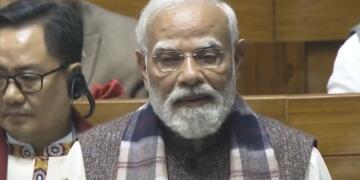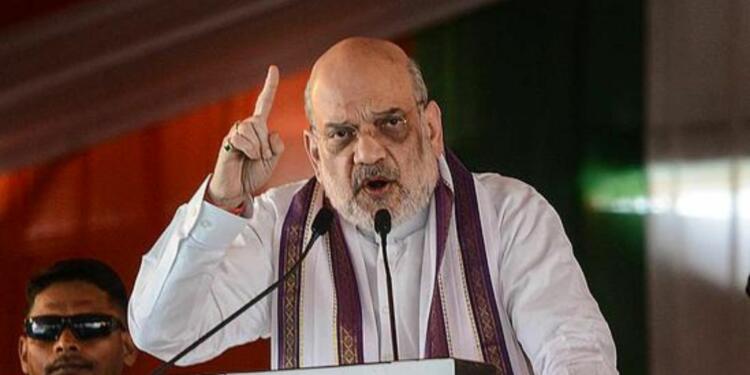In a recent operation in Chhattisgarh, security forces successfully neutralized 29 Maoists, marking a significant blow to the Naxalite insurgency in the region. Union Home Minister Amit Shah has pledged to eradicate Naxalism from India under Prime Minister Modi’s leadership, emphasizing the government’s commitment to national security. This encounter underscores the ongoing campaign against Naxalism in Chhattisgarh, where the BJP government has implemented various strategies, including increased security measures and development initiatives, to combat the insurgency. The operation reflects a concerted effort to address internal security threats and restore peace in Naxal-affected areas.
The Chhattisgarh Encounter
On April 16, 2024, a joint operation by the Border Security Force (BSF) and the District Reserve Guard (DRG) was launched in the forested area of Kanker, Chhattisgarh. The operation, based on specific intelligence, aimed to target CPI (Maoist) cadres. However, the operation swiftly escalated into a fierce gun battle when the BSF team came under fire from the Maoist insurgents. The security forces retaliated effectively, resulting in the neutralization of 29 Maoists.
Among the casualties, 29 Maoists were reported dead, marking a significant blow to the Maoist insurgency in the region. Additionally, two BSF personnel and one DRG personnel sustained injuries during the encounter. Fortunately, the injured personnel are reported to be out of danger.
The timing of this operation, just ahead of the 2024 Lok Sabha elections, underscores its political significance. The BJP government, under Prime Minister Narendra Modi’s leadership, has consistently portrayed itself as tough on terrorism and insurgency. The successful neutralization of a large number of Maoists serves as a propaganda win for the ruling party, bolstering its narrative of strong governance and national security ahead of the elections.
Amit Shah’s Commitment to Counter Naxalism
Union Home Minister Amit Shah has been vocal about the BJP government’s commitment to eradicating Naxalism from India. He attributes the intensified efforts against Naxalism to the leadership of Prime Minister Modi. Shah’s statements often highlight the government’s proactive stance and assertive actions against left-wing extremism.
Since coming to power, the BJP government has implemented various strategies to combat Naxalism. These include the establishment of security camps in Naxal-affected areas, increased coordination between security forces, and the use of intelligence-driven operations to target Maoist strongholds. Shah also mentioned the significant increase in the number of camps set up and the subsequent rise in encounters with Naxalites.
While the government’s efforts have led to notable successes, such as the neutralization of Naxal cadres and the recovery of weapons, the eradication of Naxalism remains a formidable challenge. The insurgency is deeply entrenched in socio-economic issues such as poverty, inequality, and lack of development in affected regions. Additionally, the Maoists continue to adapt and evolve their tactics, posing a constant challenge to security forces.
Also Read: India, US Stand Ready Against Narcotics & Terrorism
Implications and Challenges
The Chhattisgarh encounter sends a strong message about the government’s resolve to confront Naxalism head-on. The significant casualties among the Maoists could potentially weaken their morale and operational capabilities in the region. Moreover, it may deter other insurgents from engaging in violent activities, thus contributing to a temporary improvement in security.
Despite the tactical victory, the eradication of Naxalism remains a daunting task. The insurgency is deeply rooted in socio-economic grievances such as poverty, unemployment, and lack of development. Addressing these underlying issues is crucial for long-term peace and stability in Naxal-affected areas. Additionally, the Maoists’ ability to adapt to changing circumstances and exploit local grievances poses a persistent challenge to security forces.
Importance of Addressing Root Causes
To effectively combat Naxalism, it is imperative to address the root causes driving insurgency. This includes implementing targeted development programs, creating employment opportunities, and improving access to basic services such as education and healthcare. By addressing socio-economic disparities, the government can undermine the appeal of the Maoist ideology and weaken their support base.
Public Response and Political Dynamics
The public response to the Chhattisgarh encounter is likely to be mixed. While many may applaud the government’s efforts to maintain law and order, others may express concerns about the human cost of the operation and the potential for collateral damage. Additionally, there may be skepticism regarding the sustainability of the government’s approach in addressing the root causes of Naxalism.
The BJP’s stance on Naxalism holds significant political implications, especially in the context of the upcoming elections. The party’s strong anti-Naxalism stance aligns with its broader narrative of national security and decisive governance. By showcasing its ability to tackle internal security threats, the BJP aims to consolidate its support base and appeal to voters concerned about law and order issues.
Opposition and Civil Society Responses
Opposition parties and civil society organizations may critique the government’s approach to handling Naxalism, particularly regarding allegations of human rights violations and heavy-handed tactics by security forces. Some may argue for a more nuanced strategy that prioritizes dialogue and development over purely militaristic solutions. However, there may also be acknowledgment of the complexity of the Naxal issue and the need for a multi-faceted approach.
The anti-Naxalism campaign in India will likely continue with intensified security operations alongside targeted development initiatives. Achieving Amit Shah’s goal of uprooting Naxalism within the stated timeline remains challenging due to the entrenched socio-economic factors. A multi-dimensional approach, including robust security measures, sustainable development projects, and dialogue with affected communities, is crucial for long-term peace and stability in Naxal-affected regions.
In conclusion, the article highlights the recent Chhattisgarh encounter as a significant milestone in the government’s anti-Naxalism efforts, underscoring the importance of political will and decisive action. However, achieving lasting peace in Naxal-affected regions requires a comprehensive strategy addressing socio-economic disparities and grievances. While military operations play a crucial role, sustainable peace hinges on targeted development initiatives and dialogue with affected communities. It’s imperative for the government to prioritize long-term solutions and engage the public actively in the fight against Naxalism to create a more secure and prosperous future for all.
Also Read: Aaj Ka Bharat: Rajnath Singh’s Bold Statement On Terrorism “Ghar Mein Ghus Ke Marenge”





























